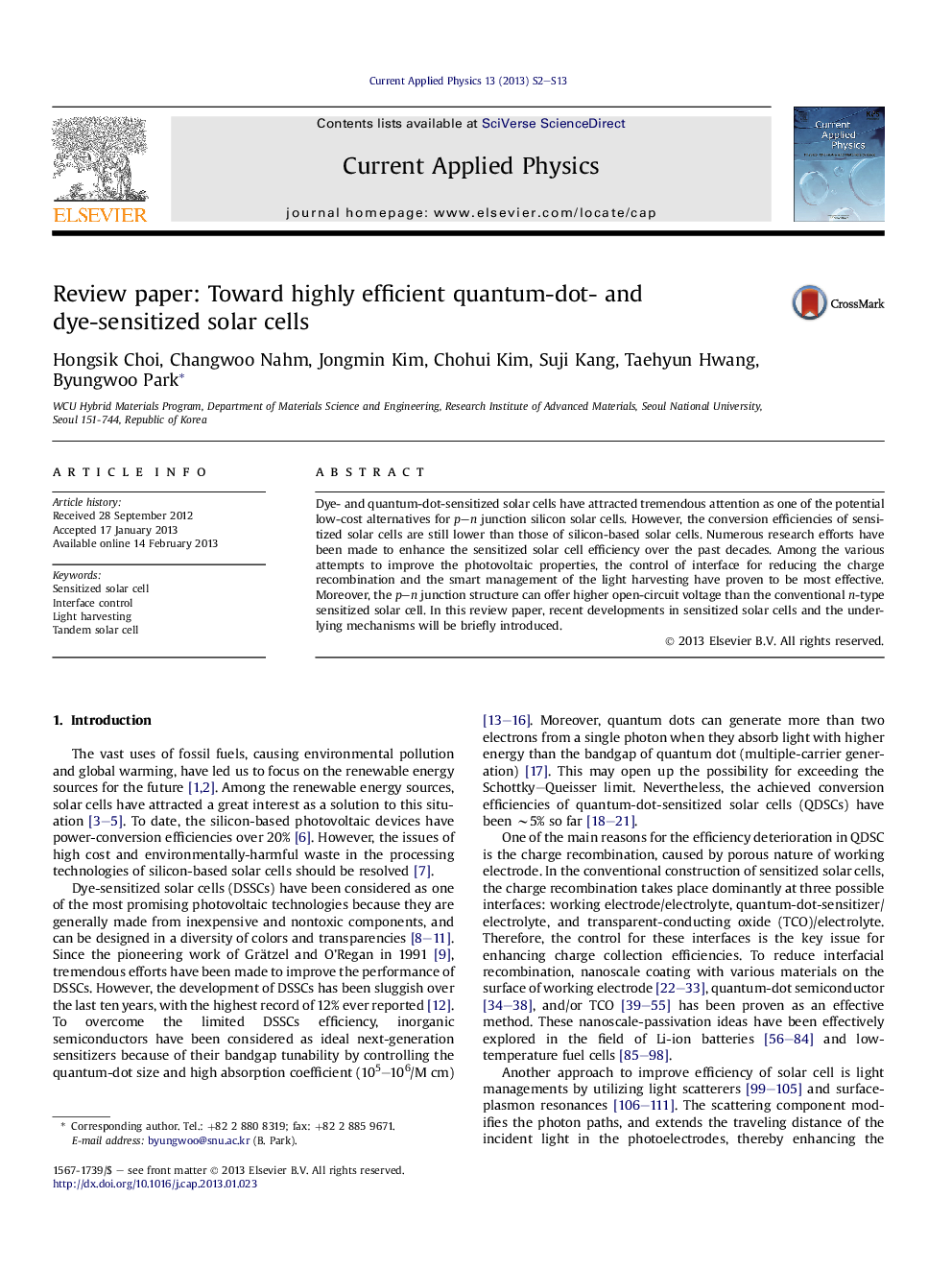| Article ID | Journal | Published Year | Pages | File Type |
|---|---|---|---|---|
| 1786615 | Current Applied Physics | 2013 | 12 Pages |
Dye- and quantum-dot-sensitized solar cells have attracted tremendous attention as one of the potential low-cost alternatives for p–n junction silicon solar cells. However, the conversion efficiencies of sensitized solar cells are still lower than those of silicon-based solar cells. Numerous research efforts have been made to enhance the sensitized solar cell efficiency over the past decades. Among the various attempts to improve the photovoltaic properties, the control of interface for reducing the charge recombination and the smart management of the light harvesting have proven to be most effective. Moreover, the p–n junction structure can offer higher open-circuit voltage than the conventional n-type sensitized solar cell. In this review paper, recent developments in sensitized solar cells and the underlying mechanisms will be briefly introduced.
